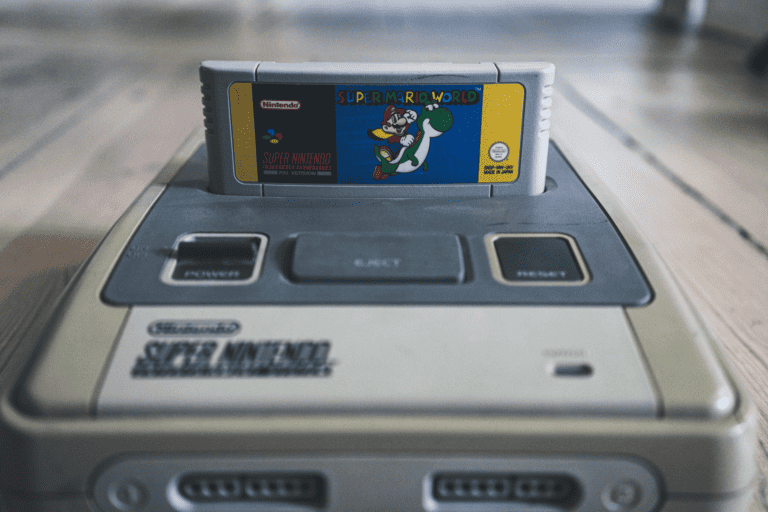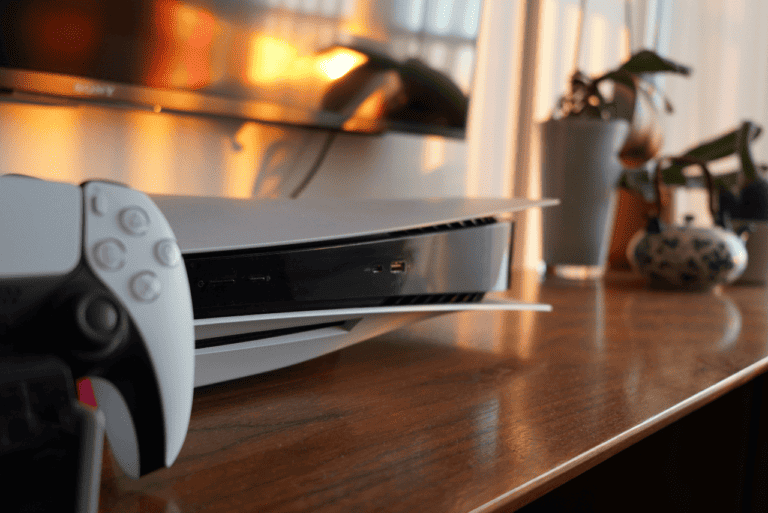
How to connect PS5 to your laptop using an HDMI cable?
Key takeaways:
In this guide, we’ll walk you through the steps to connect your PS5 to your laptop and provide tips to troubleshoot any issues you may encounter during the process. Let’s get right into it.
How to connect a PS5 to your laptop?
There are two ways to connect a PlayStation 5 console to a laptop. If your laptop has an HDMI input port, you can directly connect the PS5 to your laptop using an HDMI 2.1 cable; if not, you can connect using a video capture card.
Using an HDMI cable
As mentioned earlier, you’ll need a laptop with an HDMI input port to connect your PS5 to a computer with HDMI. To do this,
- Turn off your PS5 console and power on your laptop.
- Connect one end of the HDMI cable to the output port on your PS5 console.
- Connect the other end of the HDMI cable to the input port of your laptop.
- Turn on your PS5 console. Your laptop should indicate that a device has been connected.
Using a video capture card
Given that most laptops are equipped with HDMI output ports rather than input ports, this is the most common way of connecting a PS5 to a computer. First, you must ensure the video capture card is compatible with your PS5. Then, follow the steps below to connect your PS5 console to your laptop.
- On your PS5 menu, go to Settings > System.
- Click on HDMI and toggle Enable HDCP off to disable it.
Quick note:
HDCP (High-bandwidth Copyright Protection) prevents external devices from recording videos from the PS5. Disabling HDCP will allow you to use video capture devices.
- Connect your laptop and PS5 to a stable internet.
- Install the capture card by following the instructions in the guide. Watch the video below on how to set up the capture card.
- Get the included HDMI cable and connect one end of the cable to the output port of the PS5 and the other end to the input port of your video capture card. Make sure it is firmly connected.
- Connect the VCC to the USB port on your laptop.
- Launch the capture card software on your laptop and adjust the settings to recognise the PS5 input.
Once everything is set up, your PS5 is ready. You will see the image output on your laptop screen. You can now start your gameplay.
Which video capture cards are compatible with PS5?
When purchasing a video capture card, you must consider its specifications and video passthrough resolution to ensure it will work seamlessly with your game console. Also, most VCCs do not support the viewing, recording, or streaming of HDCP-protected signals.
Here are the five best video capture cards compatible with the PlayStation 5.
AverMedia Live Gamer Mini
Mini but mighty, it comes with an in-built H.264 hardware encoder. It offers 100% zero-latency full HD passthrough, uses USB Video Class (UVC) technology, and is compatible with Windows and Mac operating systems.
However, it doesn’t support 4K resolution, HDR, wide-angle resolutions, or high refresh rates.
AverMedia Live Gamer 4k-GC573
AverMedia Live Gamer supports 4K passthrough at 60 fps with HDR. It can record up to 144 fps at 1440p and 240 fps at 1080p.
However, due to HDMI 2.0 ports, PS5’s 4K at 120 fps can only be captured with the output resolution of 1440p. It also offers RGB lighting with three reset modes.
ASUS TUF Gaming CU4K30
It comes in a compact design and offers passthrough video support of 4K at 60 fps, 2K at 144 fps, and Full HD at 240 fps. It is backed by OBS Studio compatibility, providing usage on many streaming platforms. It supports USB video class technology and has RGB lighting.
EVGA XR1 Lite
The EVGA XR1 Lite is a durable, sleek device offering 4K/60fps gameplay. It is easy to use, affordable and has LED indicators. It is also OBS-certified and suitable for game streaming on several platforms.
Elgato HD60 X
The Elgato HD60 X is a top-rated video capture device that offers video capture at 4K at 30 fps and lower resolution—1440p and 1080p—at 60 fps. Its lag-free video passthrough is 4k at 60 fps, 1440p at 120 fps, and 1080p at 240 fps. It supports high dynamic range (HDR) and variable frame rate (VRR).
Can you connect your PS5 to a laptop without an HDMI or a video capture card?
Yes, you can. Using Remote Play, you can play PS5 games on your laptop directly. The feature also works on mobile devices such as Android, iPhone, and iPad.
The feature doesn’t require much technicality; all you need to do is download the PS Remote Play app on your laptop, sign in with your PlayStation Network (PSN), and adjust your console and laptop settings to make it work.
PS5 to laptop connection issues? Here’s what to do
The two most common issues you would likely face when connecting your PS5 to a laptop through HDMI are no image display and no audio. Let’s explore these issues further.
No image output on the laptop
If you notice no image display after connecting your PS5 console to your laptop, you must check that the two devices are turned on. If they are, try the following to resolve it:
- Confirm that you securely connected your PS5 console and the laptop using the correct HDMI cable. You can try using a different HDMI cable to confirm that the cable is not faulty.
- Confirm that you are using a compatible HDMI 2.1 cable for the connection.
- If you check yes to the above, turn off your laptop and console. Turn back after about 20 minutes and see if it is fixed.
- Check for system updates on your console. Update if there are any. If the issue persists, contact Sony PlayStation Support.
No sound from the PS5 console
If your image display is working but there is no sound coming from your laptop after connecting, try the following steps to fix it:
- Check that your laptop’s audio is not muted.
- Confirm that your PS5 console’s audio output is set to HDMI.
- If your system is out of date, update it.
- Turn off your laptop and console, disconnect the HDMI cable, and allow for 20 minutes. Reconnect and see if the issue is resolved.
- If the issue persists, contact Sony Playstation Support.
FAQs
Enjoy PS5 gameplay on your laptop!
With the help of a compatible video capture card, you can connect your PS5 to your laptop using an HDMI cable.
You can also connect it directly to your laptop with HDMI if your computer has an HDMI input. However, if these options aren’t feasible, you can use Remote Play, which converts your computer into a monitor.
Next time you want to play your favourite PS5 title but don’t have access to a TV or monitor, remember that your laptop can serve as a monitor for gameplay. Don’t hesitate to contact PlayStation Support for further assistance.




Leave a Comment